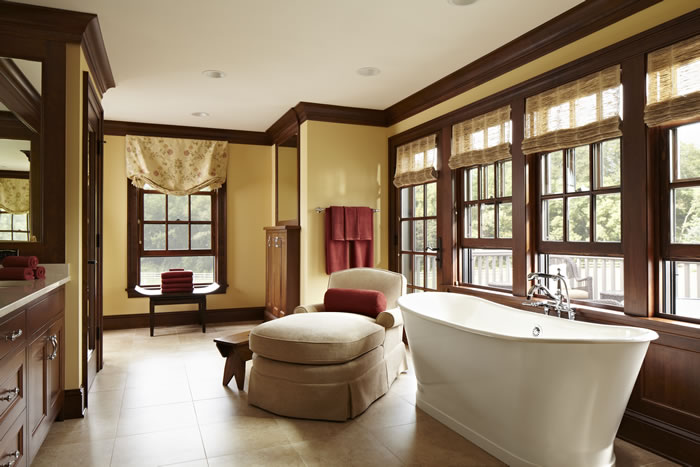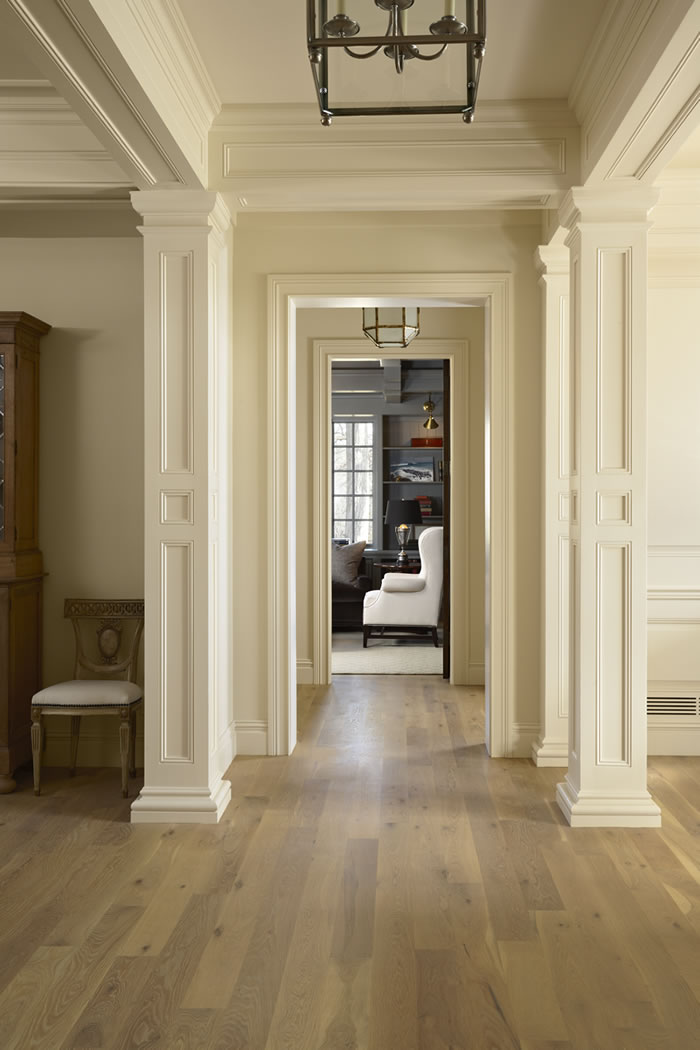Creating Characterful Interiors with Hardwood Moulding
Just as tasteful, well-chosen jewelry can turn an unexciting outfit into a stylish, eye-catching ensemble, so carefully applied hardwood mouldings and trimwork can transform a plain-Jane interior into an interesting—even beautiful—space. Since today’s new-built houses often lack any sort of carved-wood ornamentation, and many older homes have lost their traditional decorative details through successive modernizing renovations, the demand for decorative millwork, which adds character and charm to the stripped-down rooms we live in, has never been higher.

Photography by Susan Gilmore
While there is an almost infinite variety of hardwood mouldings and trims, the pros most design experts, recognize the following most basic categories:
- Baseboards, which run at the foot of walls and act as an elongated pedestal, are both aesthetic and practical. They visually anchor the wall to the floor and at the same time protect it from everyday low-impact abuse such as kids scooting around in toy cars.
- Crown mouldings, which run between the walls and the ceiling, soften the abrupt transition between wall and ceiling.
- Casings, the trim surrounding door and window openings, define a wall opening and help connect the spaces being joined.
“Our clients are attracted to the enduring quality and ageless appeal of hardwood moulding,” says architect Jeff Murphy, principal of Murphy & Co. Design, a Buffalo, Minnesota–based firm. “For them, it’s the heart of the home—something they see and touch each day. Done right, it will last forever and always be in style.”
For architect Tim Button of New York City–based Stedila Design, hardwood mouldings are appropriate in any room in the home, but he also says, “I think wood trim often makes its biggest impact in an entry hall where high ceilings allow for large-scale crown mouldings.” And he’s a fan of using stained-wood mouldings in bathrooms, “because it brings warmth to what can be a somewhat clinical space.”
Edina, Minnesota–based architect Meriwether Felt agrees, having installed stained-cherry mouldings, trims, and casings in the master bath of a home she renovated. “The client asked for a luxurious yet elegant feeling and the cherry fit the bill perfectly. The stained wood warms up the bathroom and provides richness.”
The size of the trimwork and the complexity of its profile will be determined by the size and style of the space in which it’s being installed; the larger and more traditional the room, the bigger and more ornate the trim. Crown mouldings in particular have a profound and sometimes unexpected effect on how we perceive the scale, proportions, and character of an interior, so they must be chosen with great care. Too small and plain, they’ll look skimpy and undernourished; too large and ostentatious, they’ll overwhelm the space. If in doubt, consult a design professional, who in turn may well consult the ancient Greeks: “Moulding details, proportions, and practices are rooted in the orders of classical architecture,” Jeff Murphy notes. “In many respects, we still follow those specific rules.”

Photography by Susan Gilmore.
Before the Civil War, American hardwood moulding was made by hand, so it tended to be simple, elegant, and expensive. In the later 19th century, methods of mass production enabled builders to deck out even modest houses with affordable wood trim in ever-more-complex profiles. The 20th century saw first the decorative simplifications of the Arts and Crafts style, which emphasized clean lines, unfussy forms, and the inherent beauty of natural wood, followed by the Art Deco and Modernist movements, which further streamlined or completely eliminated applied architectural ornament such as mouldings and trims.
Today, tastes tend to be eclectic, and whether you install an elaborately carved crown moulding featuring acanthus leaves and egg-and-dart detailing or an elegantly austere profile comprising nothing more than a graceful S-curve, will depend on personal preference and the overall style of your home.
No matter what your architectural preferences might be, you can transform a plain-Jane interior into a distinctive, characterful environment by incorporating hardwood mouldings and trimwork into your home’s design.



